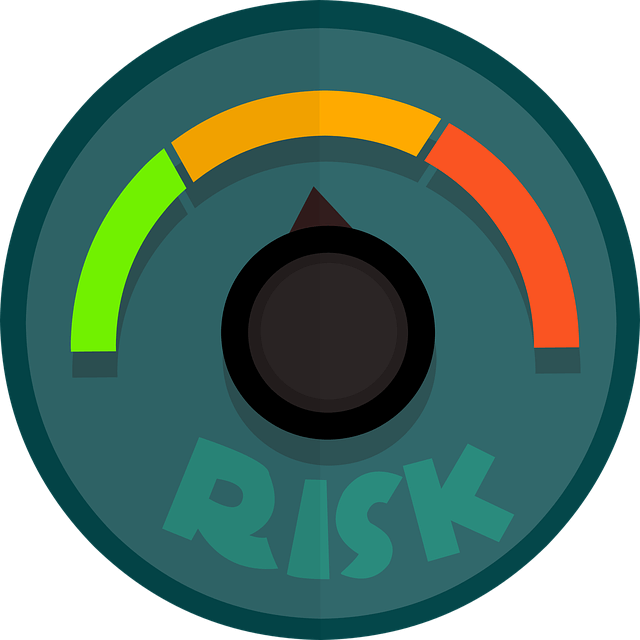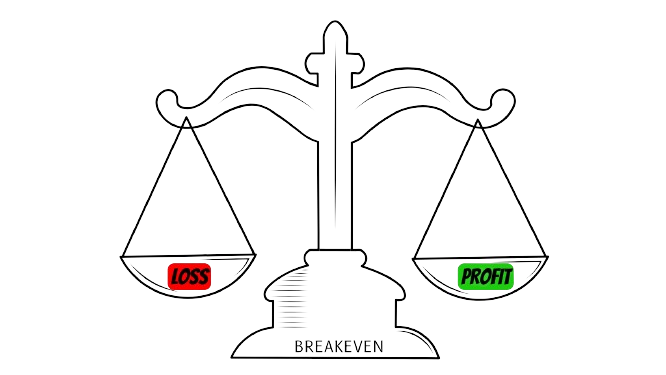How to Make Money Trading Forex: A Step-by-Step Guide

Disclaimer
Some links may earn us a small commission at no extra cost to you.
Click here to read our full affiliate disclosure.

Disclaimer
We believe in complete transparency with our audience.
Some links may earn us a small commission at no extra cost to you.
Please know that we only recommend products/services we have personally used, thoroughly researched, and genuinely believe can benefit our audience.
We are immensely grateful for every click and purchase you make through these links. Thank you for being a part of our community and for your continued support!
Click here to read our full affiliate disclosure.

Updated on 08/10/2024
While forex trading has the potential to provide substantial profits, there is also a significant risk of loss involved.
The forex market can be highly volatile and unpredictable, and many traders experience losses, especially if they don't have the right approach and understanding.
In this guide, we'll break down the crucial elements that could maximise your potential, and provide strategies for anyone interested in learning how to make money trading forex.
Key Factors for Success in Forex Trading

In the upcoming blog sections, we’ll thoroughly explore key factors that sharpen your trading skills and boost your results. These include:
1. Knowledge:
Before you actually begin trading, it's essential to gain an understanding of market movements, terminology, and variables that affect currency fluctuations.
For example, economic indicators, geopolitical events, interest rates, and more.
2. Strategy:
A strategy outlines your approach to entering and exiting trades, risk management, and position sizing.
There are various trading strategies for scalping, day trading, swing trading, and position trading.
Choose a strategy that aligns with your personality, time availability, and risk tolerance.
3. Discipline:
In forex trading, emotional restraint and self-discipline are crucial.
Fear and greed are two emotions that can lead to impulsive decisions that result in losses.
A well-disciplined trader knows when to enter and exit trades.
4. Risk Management:
Never risk more than a small portion of your trading capital on a single trade.
Position sizing and stop-loss orders are two strategies that can help shield your account from significant losses.
5. Continuous Learning:
The forex market evolves over time. Stay up-to-date with market news, economic indicators, and trading techniques.
Adapt and refine your strategy as needed.
How to Be a Successful Forex Trader

I. Build a Strong Foundation
Forex trading involves a unique set of terms and principles that might seem overwhelming at first.
A solid education will help clarify the terminology, concepts, and mechanics of the forex market, and as a result, empower you to make better decisions and minimise potential risks.
Make use of Online Resources, Courses, and Books
1. Online Resources:
There is a wealth of information available online, including articles, tutorials, and videos that cover the basics of forex trading.
2. Courses:
Many platforms offer comprehensive courses that cover everything from the fundamentals to advanced trading strategies.
These courses often include interactive components, quizzes, and support from instructors.
3. Books:
There are a ton of books written by seasoned traders and experts that explore different aspects of forex trading.

Understand Market Analysis: Fundamental vs. Technical Analysis
Fundamental Analysis:
Fundamental analysis involves examining the economic, political, and social variables that can affect currency prices.
This analysis considers factors such as central bank decisions, geopolitical events, economic news, and economic indicators (such as GDP, unemployment rates, and inflation).
By understanding the root factors influencing currency values, fundamental analysis aims to identify long-term trends. Visit this trading guide to learn more.
Technical Analysis:
Technical analysis focuses on studying historical price data and using chart patterns, indicators, and tools to predict future price movements.
Traders who use technical analysis believe that historical price patterns tend to repeat themselves, and by recognizing these patterns, they can make more accurate predictions.
Technical analysis involves identifying trends, support and resistance levels, and other patterns that can be used to help guide trading decisions. Visit this trading guide to learn more.
Both fundamental analysis and technical analysis have their strengths, and many traders use a combination of both to make informed trading decisions.

II. Overcome the Psychological Challenges of Forex Trading
In my opinion, the most difficult thing about trading isn’t having to analyse charts and make trading decisions; it’s managing your emotions and psychology. Some psychological challenges to take note of include:
1. Fear: leads to hesitation in executing trades, missing out on opportunities, or prematurely closing profitable positions.
It can also cause traders to hold on to losing trades for too long, hoping they will turn around.
2. Greed: can drive traders to over-leverage their positions, ignore risk management, and overtrade.
It often leads to chasing after unrealistic profits and making impulsive decisions.
3. Impatience: can make traders enter trades prematurely or exit too early, missing out on potential gains.
4. Overconfidence: Overestimating your abilities can lead to ignoring proper analysis and risk management, resulting in losses.
How to Improve Your Trading Psychology
1. Develop a Trading Plan: Having a well-defined trading plan that outlines entry and exit criteria, risk management, and a solid strategy can help reduce emotional decision-making.
2. Practice Patience: Avoid rushing into trades. Wait for your trading criteria to be met and don't be afraid to miss a trade if the conditions aren't right. You may use this Forex Trading Checklist to help retain discipline and patience.
3. Risk Management: Establish and stick to a risk management strategy that limits the amount you can lose on each trade. This can help mitigate the fear of significant losses.

4. Mindfulness and Awareness: Be aware of your emotions while trading. If you feel fear or greed taking over, step back and reassess before making any decisions.
5. Journaling: Keeping a trading journal where you record your emotions, thoughts, and reasoning behind each trade can help you identify patterns in your behaviour and emotions.
You can use a hardcopy or advanced journaling software like TradeZella.
6. Regular Breaks: Take breaks between trades to clear your mind and prevent emotional carryover from one trade to the next.
Make sure you’re getting enough sleep. This also ensures your mind will be sharp while trading, so you won’t be prone to making mistakes.
How to Establish a Disciplined Trading Routine
1. Stick to Your Trading Plan: A disciplined trader follows their trading plan and strategy without deviating based on emotions or external influences.
2. Set Clear Goals: Develop realistic and achievable trading goals. These goals can help you stay focused and motivated.
3. Set Trading Hours: Determine specific trading hours that align best with your strategy and schedule. Avoid overtrading, which can lead to exhaustion and poor decision-making.
4. Avoid Revenge Trading: After a losing trade, avoid jumping back into the market in an attempt to recoup losses. This is a quick and easy way to blow your trading account. Stick to your plan and avoid making impulsive decisions.
5. Continuous Learning: Keep learning and improving your skills. The more confident you become in your trading abilities, the better you can manage psychological challenges.

III. Develop a Trading Plan
Defining Your Financial Goals and Risk Tolerance
Before you begin trading, you should set clear financial goals and determine your risk tolerance.
Financial goals could include reaching a particular level of return on investment, generating additional income, or accumulating long-term wealth.
Your risk tolerance is the amount of capital you're willing to risk on a trade and how comfortable you are with potential losses.
It's important to align your goals and risk tolerance to create a trading plan that suits your circumstances.
Setting Realistic Expectations: Risk vs. Reward
Understanding the relationship between risk and reward is fundamental in forex trading. As you develop your trading plan, consider the following:
1. Risk-Reward Ratio: This ratio compares a trade's possible profit against its potential loss.
A popular rule of thumb is to aim for a risk-reward ratio of at least 1:2, which means that the possible profit is at least twice as large as the potential risk.
This ensures that your profitable trades may offset your losses.
2. Win Rate: The win rate is the percentage of your trades that result in a profit. While a high win rate might seem appealing, it's important to also consider the risk-reward ratio.
A lower win rate can still be profitable if your risk-reward ratio is favourable. For example, trades with a risk-reward ratio of 1:10 and beyond.
3. Realistic Expectations: Avoid unrealistic expectations of making consistent, huge profits from every trade.
The forex market is volatile and unpredictable, and losses are a part of trading. A well-structured trading plan focuses on long-term profitability rather than immediate gains.

Establishing a Well-Structured Trading Strategy
A trading strategy outlines your approach to entering and exiting trades, risk management, and decision-making.
Here's how to develop a good trading strategy:
1. Timeframe: Decide the timeframe that aligns with your trading style. Are you a day trader, swing trader, or position trader?
Different timeframes require distinct strategies and risk management approaches.
2. Market Analysis: Determine whether you'll use fundamental analysis, technical analysis, or a combination of both.
Identify the key indicators, chart patterns, and signals that influence your trading decisions.
3. Entry and Exit Criteria: Define the criteria that will trigger your entry into a trade. This could be a specific technical signal, a combination of indicators, or a fundamental event.
Similarly, establish the conditions that will prompt you to exit a trade, like a predetermined profit target or a stop-loss level.
You should also develop exit criteria for the trades that don’t go your way. This can mean exiting positions with partial profits or at breakeven points.
Remember, the goal is to be profitable overall and not to win every trade. No strategy is 100% accurate.
4. Risk Management: Specify the percentage of your trading capital you're willing to risk on each trade. This helps protect your capital from substantial losses.
Determine where you'll set your stop-loss and take-profit levels based on your risk-reward ratio.
5. Review and Adaptation: Regularly review your trading strategy to assess its effectiveness. Keep a trading journal to record your trades, including reasons for entry and exit, emotions, and outcomes.
Analyse this data to identify patterns, strengths, and weaknesses. Adapt your strategy based on your findings.
IV. Understand why Risk Management is so Important
Risk management is one of the most critical aspects of successful forex trading. It involves strategies and techniques that aim to minimize potential losses while maximizing potential gains.
Without effective risk management, even a well-developed trading strategy can lead to significant losses. Here are two key risk management principles:
1. Capital Preservation: The primary goal of risk management is to preserve your trading capital.
By limiting the amount you risk on each trade, you protect your overall account balance from substantial drawdowns.
2. Emotional Control: Risk management strategies help you maintain emotional control during trading.
When you have a well-defined risk management plan, you're less likely to make impulsive decisions driven by fear or greed.

Determining Position Size Based on Risk Percentage
Position sizing is a critical component of risk management. It involves determining the appropriate amount of capital to risk on each trade.
Before determining position size, it is important to know these terms:
1. Pip:
For most major currencies, a pip is typically the fourth decimal place, equivalent to 0.0001. For example, if the EUR/USD pair moves from 1.1200 to 1.1201, that represents a one pip increase.
Note: In pairs involving the Japanese Yen (JPY), a pip is represented by the second decimal place, meaning a change from 110.00 to 110.01 is also one pip.
2. Point:
A point or "pipette" or "fractional pip" represents a movement of 0.0001 (one-tenth of a pip) in the currency pair’s price. This means that for every pip you calculate, there are 10 points. 10 points = 1 pip, 100 points = 10 pips, and so on.
3: Standard Lot:
100,000 units of a given currency. 1 standard lot is equivalent to 1 lot (trade volume), valued at $1 per point movement.
4: Mini Lot:
10,000 units of a given currency. 1 mini lot is equivalent to 0.1 lots (trade volume), valued at $0.1 per point movement.
5. Micro Lot:
1000 units of a given currency. 1 micro lot is equivalent to 0.01 lots (trade volume), valued at $0.01 per point movement.
This applies to all pairs with the USD listed second. If the USD is listed first, the point values will differ slightly.
Trading on a standard lot is recommended exclusively for seasoned traders.
Here's how to calculate position size:
A common risk management rule is the 2% rule: you should not risk more than 2% of your trading capital on any single trade.
Position Size = (Account Size * Risk Percentage) / (Stop Loss in Points * Point Value)
For example,
If you have a $10,000 trading account, and you’re willing to risk 2% ($200) on each trade. You’re trading EUR/USD with a stop-loss at 1.1000 and an entry price at 1.1050. That's a difference of 500 points.
Position Size = ($10,000 * 0.02) / (500 * 0.01) = $200 / 5 = 40 micro lots.
In other words, you should put 0.4 as the trade’s volume.
Using Stop-Loss and Take-Profit Orders Effectively
1. Stop-Loss Orders: A stop-loss order is a predetermined price at which your trade will be automatically closed to limit potential losses.
Placing a stop-loss order ensures that you exit a losing trade before the losses become too significant.
It's important to set your stop-loss based on technical levels, support/resistance, or other factors that make sense for your trading strategy.
Note: To avoid getting stopped out prematurely by the market, your stop loss should be placed a little beyond the identified key level.
2. Take-Profit Orders: A take-profit order is a predefined price at which your trade will be closed to secure profits.
Having a take-profit level in place helps you avoid the temptation to close a winning trade prematurely due to emotional impulses.
Your take profit should be placed a little before the identified key level, as price tends to reverse as it approaches key levels.
Trailing Stop and Breakeven Stop-Loss:
• Trailing Stop: As a trade becomes profitable, a trailing stop moves the stop-loss level automatically to lock in profits if the market reverses.
It allows you to ride trends while protecting your gains. Using a trailing stop is convenient if you’re very busy and do not have as much time to monitor your trades.
• Breakeven Stop-Loss: Once a trade reaches a certain profit level, you can move your stop-loss to your entry point (breakeven) to eliminate the risk of losing money on the trade.

V. Learn how Your Broker Aids Your Risk Management Efforts
It's important for traders to carefully consider the risk management features offered by brokers when choosing a platform.
While no strategy can completely eliminate risks, having additional protective measures in place can significantly contribute to a more secure trading experience.
For example, XM is known for offering a feature called "No Negative Balance Protection". This is a risk management tool designed to protect traders from losing more money than they have deposited into their trading accounts.
In volatile markets or during unexpected price gaps, there's a risk that a trader's account balance could turn negative if losses exceed the available funds.
With no negative balance protection, the broker ensures that traders do not owe more money than what is in their account.
In the event of extreme market movements, the broker absorbs the additional losses, preventing traders from falling into debt.

Image Source:XM Website
VI. Backtest Your Trading Strategies Using Historical Data
Backtesting involves testing your trading strategies using historical price data to evaluate how they would have performed in the past.
This practice helps you assess the viability of your strategies before applying them to live trading.
Note: Using Pine Script on TradingView can significantly simplify the process of backtesting trading strategies.
Here's how to approach the process:
1. Data Selection: Gather historical price data for the currency pairs you plan to trade. Ensure that the data is accurate and covers a relevant time frame.
TradingView provides access to a wide range of historical price data for various financial instruments.
Using the Bar replay feature, traders can easily select the desired time frame and historical data range directly on the TradingView platform, and then see how their strategy would have performed bar by bar.
This makes it easier to identify strengths and weaknesses.
2. Strategy Implementation: Apply your trading strategy rules to the historical data. Note entry and exit points, stop-loss and take-profit levels, and other relevant details.
Pine Script allows traders to create custom indicators and strategies with a relatively simple syntax.
Traders can define their specific entry and exit conditions, stop-loss and take-profit levels, and any other criteria relevant to their strategy.

Image Source:TradingView Website
3. Analysis: Assess how your strategy would have performed over the historical period. Pay attention to factors like drawdowns, profit/loss ratios, and the overall success rate.
Pine Script supports the creation of custom performance metrics within the script.
Traders can output key statistics such as profit/loss ratios, maximum drawdowns, and success rates directly on the TradingView chart.
TradingView also allows traders to visually assess the strategy's performance by plotting signals, trades, and other relevant information directly on the price chart.
This visual representation aids in a quick and intuitive analysis.
4. Adjustments: If your strategy doesn't yield the desired results, consider making adjustments.
This could involve tweaking entry or exit criteria, adjusting risk management parameters, or incorporating additional indicators.
Pine Script makes it easy to iterate and optimize strategies. Traders can quickly make adjustments to their script, re-run the backtest, and assess the impact on performance metrics.
This iterative process helps fine-tune the strategy for better results.
Pine Script also allows traders to import external data into their scripts.
This can be useful for incorporating additional factors or indicators into the backtesting process, providing a more comprehensive analysis.
Additional Benefits:
• Community and Sharing:TradingView has a vibrant community where traders can share their Pine Script indicators and strategies.
This enables collaboration, learning from others, and gaining insights into different approaches to strategy development.
• Cross-Platform Compatibility: Pine Script indicators and strategies developed on TradingView can be used across different devices and platforms, providing flexibility and convenience.
Note: While backtesting is a valuable tool, it has limitations. Historical data might not perfectly reflect future market conditions.
Over-optimization (fine-tuning a strategy to perform well only on historical data) can lead to poor performance in live trading.

Image Source:TradingView Website
VII. Be Open to Adapting Your Trading Strategies Over Time
1. Market Conditions: Different market conditions require different strategies. A strategy that works well in a trending market might not perform as effectively in a range-bound market.
Be prepared to adjust your approach accordingly.
2. Feedback and Analysis: Regularly analyse your trading performance and the outcomes of your strategies. Identify strengths and weaknesses and be open to making necessary adjustments.
3. New Tools and Indicators: As you gain experience, you might come across new tools or indicators that align better with your trading style.
Don't hesitate to incorporate them into your strategy if they prove effective.
4. Changing Goals: Your financial goals or risk tolerance might change over time. Adapt your trading strategies to reflect these changes while maintaining a disciplined approach.
5. Learning from Mistakes: Don't be discouraged by losses or mistakes. Use them as learning opportunities to refine your strategies and improve your decision-making.

Final Thoughts
Forex trading offers significant profit opportunities, but success requires a combination of knowledge, strategy, discipline, and psychological resilience.
Here are the key takeaways to keep in mind during your forex trading journey:

Remember, success in forex trading is not guaranteed, and losses are a natural part of the process.
Do not trade with money you cannot afford to lose, because losing trades are inevitable, no matter how much research, prior analysis you've done, or how positive you are in your trade.

Trending
It's possible, even without an SSN.
Discover key qualities to consider when choosing right.
Learn what contributes to a successful business launch.

Deals & Promotions
You can also gain unlimited access to Exclusive Content and Offers.

2025 © MitchelleO.D. All Rights Reserved.
Disclaimer: As an Amazon Associate, we earn from qualifying purchases. We may participate in additional affiliate networks or programs beyond Amazon.
Visit our Affiliate Disclosure Page to learn more.










